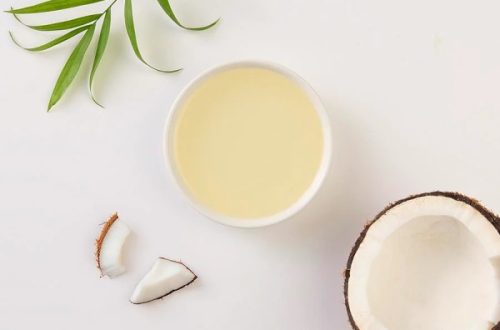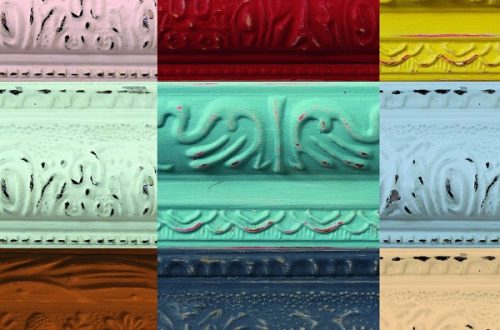Oil pastels and soft pastels, despite their similar names, offer distinct artistic experiences. Both mediums boast vibrant colors and a unique drawing style, but their properties and applications differ significantly. Understanding these differences will equip you to choose the right pastel for your artistic vision.
Part 1: Composition and Texture
Binder:

Soft pastels consist mainly of pigment mixed with a small amount of chalk or binder, which gives them their characteristic soft, powdery texture. This unique composition allows for seamless blending and the creation of delicate, precise lines. The powdery nature of soft pastels also contributes to their ability to generate a wide range of tones and subtle gradients, making them ideal for capturing nuanced details and achieving a gentle, ethereal aesthetic in artworks.
Conversely, oil pastels utilize oils and waxes as binders, resulting in a firmer, crayon-like texture. This composition enables oil pastels to produce more intense and vibrant colors with bold, expressive strokes. The rich, creamy consistency of oil pastels also allows for layering and blending, making them ideal for creating dynamic and textured effects in artwork. By understanding the distinct compositions and textures of soft and oil pastels, artists can select the most suitable medium to achieve their desired artistic expression and visual impact.
Layering and Blending:
The soft, powdery nature of soft pastels makes them ideal for layering and blending. Colors can be seamlessly transitioned into one another, creating a hazy, almost dreamlike effect. Oil pastels, due to their waxy texture, blend less readily. However, they offer the ability to build up layers for richer colors and create a more defined, blocky style.
Part 2: Application and Techniques

Detail Work:
Soft pastels excel at creating detailed work. Their ability to hold a sharp point and blend smoothly allows for precise shading and outlining. This makes them perfect for portraits, landscapes with intricate details, and realistic drawings. Oil pastels, with their thicker consistency, are less suited for fine details. They shine in bold, expressive strokes and covering larger areas, making them ideal for abstract art, backgrounds, and creating a sense of movement.
Surface Compatibility:
Soft pastels require a toothy surface with good tooth (texture) to grip the pigment. Pastel paper specifically designed for soft pastels is ideal. Other suitable surfaces include watercolor paper, canvas with a toothy gesso, and even sandpaper for a unique effect. Oil pastels, due to their waxy binders, have greater surface versatility. They can be used on traditional pastel paper, but also on canvas, wood, metal, and even glass.
Part 3: Additional Considerations
Fixative:
Soft pastels are renowned for their loose pigment, which makes them susceptible to smudging. This characteristic can present a challenge when it comes to preserving finished artwork. To safeguard soft pastel creations from smudging and ensure their longevity, artists often utilize fixative sprays. These sprays form a protective layer over the pastel work, preventing the pigment from smearing and providing added durability to the piece.

In contrast, oil pastels exhibit a more stable and permanent nature owing to their binding agents. The presence of oils and waxes in oil pastels helps to secure the pigment, making the artwork less prone to smudging. As a result, oil pastel artworks typically do not require the application of fixative sprays for protection against smudging or to enhance longevity.
Understanding the unique preservation needs of soft and oil pastels allows artists to take appropriate measures to safeguard their creations. By utilizing fixatives for soft pastels and recognizing the inherent stability of oil pastels, artists can ensure the lasting quality of their artworks.
Cleaning Up:
Soft pastels are renowned for their powdery nature, which can create a mess during the artistic process. However, artists have several tools at their disposal to address this issue. Using a kneaded eraser or a dedicated pastel eraser is an effective way to lift unwanted color and make corrections without smudging the surrounding areas. These special erasers are designed to gently lift the powdery pigment without leaving residue, allowing for precise adjustments and refining of details in soft pastel artworks.
In contrast, the waxy consistency of oil pastels means that erasing can leave a slight residue on the surface. Despite this, oil pastels are less likely to smudge and are easier to clean up from surfaces, making them a more convenient option in terms of managing mess and maintaining the workspace during the creative process.

Understanding the cleanup challenges and tools specific to each pastel medium empowers artists to navigate and overcome the unique characteristics of soft and oil pastels, ensuring a smoother and more efficient artistic experience.
Part 4: Choosing the Right Pastel
Artistic Style:
When selecting between oil pastels and soft pastels, it’s crucial to consider the intended artistic style. Soft pastels excel in creating detailed and blended artwork with a gentle, delicate appearance. Due to their powdery texture, they are superb for achieving smooth transitions and intricate details, making them well-suited for portraits, landscapes, and still life.
On the other hand, artists seeking bold, expressive strokes and vibrant, textured effects best suit oil pastels. They offer a rich and creamy consistency, allowing for the build-up of layers and the creation of intense, vivid colors with strong, textural qualities. This makes them an ideal choice for artists looking to create dynamic, abstract pieces or to add impactful highlights and details to a variety of subjects. By carefully considering the intended style and desired visual impact, artists can leverage the unique qualities of oil and soft pastels to effectively convey their artistic vision.
Experience Level:
Soft pastels are an excellent choice for beginners as they offer greater control, enabling artists to achieve detailed work with precision and finesse. Their powdery texture allows for smooth blending, making them ideal for creating intricate artwork such as portraits, still life, and landscapes. This level of control makes soft pastels a popular option for artists looking to master the techniques of blending and layering.

Conversely, oil pastels, with their thicker consistency, may pose a slight learning curve for beginners as they require practice to master blending techniques. However, once these techniques are mastered, oil pastels have the ability to produce striking results rapidly. Their rich and creamy texture allows for bold, expressive strokes, vibrant colors, and strong textural effects, making them well-suited for creating dynamic and impactful artwork.
By understanding the different characteristics and attributes of soft and oil pastels, artists can make informed decisions based on their skill level, artistic style, and desired visual outcomes.
Ultimately, the choice between oil and soft pastels depends on your artistic goals and preferences. Experiment with both mediums to discover which one unlocks your creative potential!





